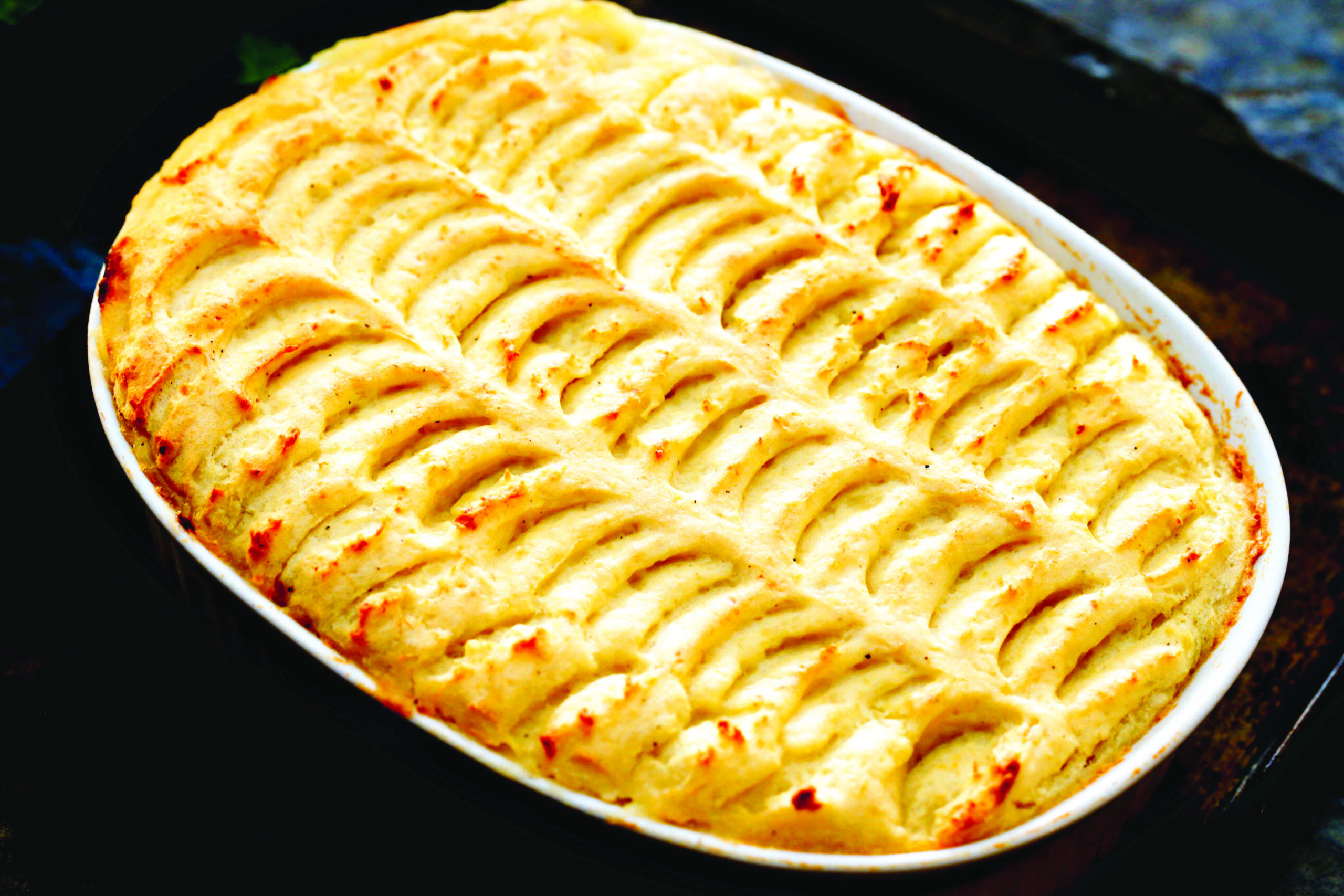Last Sunday we gathered at Mom’s house for the weekly family meal. I’ve had this dish at least a thousand times before, so I consider it one of mom’s signature dishes. Yet, it has no name. Among ourselves, we refer to it as vaal vleis or opruk rugstring, but beyond this closed family code, it has no name.
Which got me thinking about the importance of giving names to dishes.
To name a dish is to give it identity. Much like our own names form part of our own personal identity, it is our names that make us instantly recognisable. Distinguish us from others. Provide some degree of intimacy.
How often have you met a complete stranger and during the course of your conversation discovered that you have common friends or acquaintances? Or, God forbid, common enemies?
Once these have been identified, the conversation invariably becomes more grounded, intimate even. By knowing someone you know, I can trust you more. An instant bond has been formed between two strangers.
Have you noticed how often people, when comforted by a particular dish establish a link between that dish and someone dear to them? Mother or grandmother perhaps?
Flavours petition our memories, particularly the positive ones. The name of a dish provides a shortcut by which we access the flavour profile created and stored in our brains and the conditions and circumstances associated with them. In short, the mere mention of the name of a dish is often enough to make our mouths water and long for special people, events or places.
Names are thus powerful things, and for this reason, I believe that special family dishes should be given names.
Flipping through cookbooks does provide some insight about how dishes are given names. For in order to write a recipe down, it requires a name. I have yet to come across a published, nameless dish.
Perhaps the most common naming convention for dishes is to combine one or more of the main ingredients with the type of dish. Thus named, we have pea soup, liquorice ice cream, fish pie, lamb stew, and a few million more.
The name tells us exactly what it is. There is no intent to create confusion or ambiguity, and little creative imagination is required. To make such named dishes a little more mysterious, the cook may refer to them by their native names: coq au vin (chicken in wine), chilli con carne (meat with chilli), or Cozze al Vino Bianco (mussels in white wine).
A second common naming convention is to combine main ingredients with the cooking method used to prepare the dish. Slow braised lamb shank, fried kabeljou, poached quail eggs and so forth. Not much mystery or creativity here either.
Dishes are also named after people – those who created them, who inspired them or who commissioned them. Examples of such dishes include: Fettuccine Alfredo, Peach Melba, Beef Stroganoff, and Beef Wellington.
In local cookbooks I came across a great many mothers, mother-in-laws, sisters, brothers, great-great grandmas and even a few pets (okay, I am joking), who had dishes named after them. All very personal, perhaps, even too personal, for many of these loved ones displayed preference for rather curious flavour and ingredient combinations. Imaging bumping into Jan-so-and-so, knowing that Jan loves marshmallows with his coleslaw. What do you say to a man like that?
Another common practice is to name a dish based on its origins. The locality most closely associated with the core ingredients or orgins of the dish. Black Forrest Cake, Lancashire Hotpot, Chicken Kiev and Peking Duck are well known examples.
Locally, I have come across quite a few, such as: Kamanjab steaks, Aranos Venison Steaks, Kalahari Biltong Salad, Venesiaanse eiers, Kalahari lamsblad or Bolandse Kerriekos.
Then there are the humorous names, based on local associations and resemblances: Spotted Dick, Toad-in-a-hole, Blote Billetjes in het Gras, Bubble and Squeak are but a few that come to mind.
Over the past few decades, scientific interest in food and cooking has increased quite significantly, and paved the way for greater understanding of our relationships with food. We now know more than ever how the production of food – vegetables, fruits and proteins – affect their flavour and texture. Similarly, we are developing a greater understanding of how our culinary operations (cutting, peeling, cooking etc.) contribute to the overall quality of a meal.
But perhaps, the most interesting contribution of the modern scientific approach to cooking have been on our perceptions of our meals. Innovative chefs were quick to incorporate the elements of expectations, atmosphere, experience and symbols into their culinary repertoires in order to give diners a whole new, more complete dining experience. Meals have become truly multisensory experiences and top end chefs rely more and more on scientific fields such as psychology and neuropsychology to entertain us.
Acclaimed British Chef Heston Blumenthal devised a dish called Orange and Beetroot Jelly. Two squares of coloured jelly on a plate. One the red colour of beetroot, the other the colour of an orange. Upon delivering the plate, the waiter confirms the name of the dish, and then suggests the diner starts with the ‘orange’. Diners go for the orange coloured jelly, then discover they have been played, for the orange coloured jelly does not taste of orange. Only when the red coloured jelly is tasted, Blumenthal’s playful secret is revealed. The orange coloured jelly is made from yellow beetroot, and the red from blood oranges. The title of the dish is key to the success of Blumenthal’s intent to play with the diner. What you see is not what you eat.
At Noma Restaurant, Chef René Redzepi forces diners to think about the ingredients, the seasons and their natural environment. Thus you’ll find dishes such as: Blueberries surrounded by their natural environment, Vegetable Field, and Langoustines and Sea Flavours.
Now, I wrote this as I am reflecting on how to approach documenting my own family’s food and culinary identity. Hope it inspires you to find names for yours too.
In the mean time here is a recipe that is in need of a better name: fish pie. I did not grow up eating it. I ate my first fish pie when I started dating in English.
And, no, I’ll not be naming my fish pie after her, for then I shall have to reveal that she liked Marmite with her scrambled eggs.
Take care!• Martha Mukaiwa
After watching the widely panned ‘After Earth’ (2013), I just want to know which Hollywood overlord blacklisted M Knight Shyamalan with such steadfast ire that his films have been vitriolic critic fodder circa ‘The Sixth Sense’?
I thought ‘The Sixth Sense’ (1999) was incredible, ‘Unbreakable’ (2000) was inspired, ‘Signs’ (2002) freaked me out as did ‘The Village’ (2004), ‘The Happening’ (2008) and ‘Devil’ (2010) and I only grudgingly entertained the facts that ‘Lady in The Water’ (2006) and ‘The Last Airbender’ (2010) may have been on the right side of snafu.
This is why, when I saw ‘An M Knight Shyamalan’ film in the introductory credits of ‘After Earth’ (2013), I was, admittedly, more than a little excited.
Suddenly, it wasn’t just Will Smith’s continued pursuit of the happyness that sees him once again playing the father of his real life son, Jaden. Instead, I thought it would be another cryptic piece of art in the twisty, monster-filled and supernatural fashion that has made Shyamalan as famous as he is ridiculed.
Stay informed with The Namibian – your source for credible journalism. Get in-depth reporting and opinions for
only N$85 a month. Invest in journalism, invest in democracy –
Subscribe Now!










